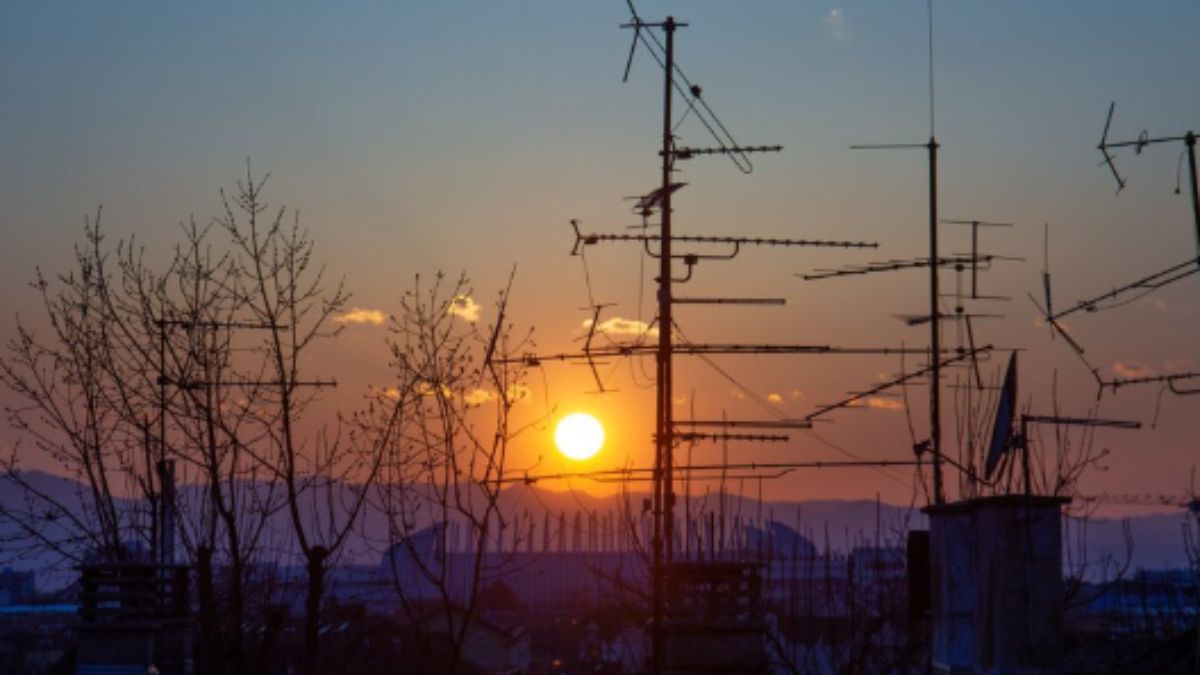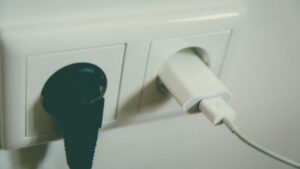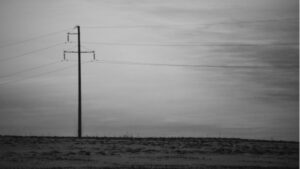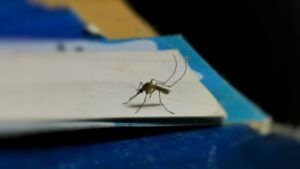Topic
Mermaids in the Bible: Ancient Legends and Scriptural Echoes

Mermaids, with their mythical allure and duality of human and fish forms, have long fascinated cultures worldwide. These enchanting beings often symbolize various themes, from seduction to wisdom. While the Bible does not directly mention mermaids, the text’s rich imagery and symbolism provide intriguing parallels to these mythical creatures. This comprehensive exploration will delve into biblical references, historical contexts, and interpretive angles to uncover how mermaid-like figures might intersect with scriptural themes.
Biblical References to Sea Creatures: A Deeper Dive
The Bible, a cornerstone of Christian and Jewish traditions, frequently mentions sea creatures that symbolize divine power, chaos, and cosmic forces. Understanding these references can illuminate how mermaid-like beings might fit into the biblical narrative.
Leviathan: The Monstrous Sea Serpent
Description and Biblical Mentions
Description: Leviathan is often depicted as a gigantic sea serpent or dragon, embodying primordial chaos and evil forces. Its depiction varies from a literal monster to a symbolic representation of untamed nature.
Biblical References:
- Job 41:1: “Can you pull in Leviathan with a fishhook or tie down its tongue with a rope?” This passage highlights Leviathan’s formidable nature, emphasizing its strength and the futility of human attempts to control it.
- Psalms 74:14: “It was you who crushed the heads of Leviathan and gave it as food to the creatures of the desert.” This verse celebrates divine triumph over chaos, using Leviathan as a symbol of God’s power over disorder.
- Isaiah 27:1: “In that day, the Lord will punish with his sword—his fierce, great and powerful sword—Leviathan the gliding serpent, Leviathan the coiling serpent; he will slay the monster of the sea.” This passage portrays Leviathan as a chaotic force subdued by God, illustrating the theme of divine sovereignty over cosmic forces.
Symbolism and Interpretations
- Symbolism: Leviathan represents the chaotic and destructive forces that God has the power to control. In ancient Near Eastern contexts, Leviathan symbolizes the primordial chaos that existed before creation.
- Interpretations: Some scholars argue that Leviathan’s characteristics could be interpreted as similar to mythical sea creatures from other cultures, including mermaids and sirens. Its depiction as a monstrous sea entity aligns with themes of danger and unpredictability found in mermaid myths.
Behemoth: The Counterpart to Leviathan
Description and Biblical Mentions
- Description:
Behemoth is depicted as a colossal land creature, often contrasted with Leviathan. It symbolizes strength and the majesty of creation.
Biblical Reference:
Look at Behemoth, which I made along with you and which feeds on grass like an ox.” This verse describes Behemoth as a powerful but benign creature, emphasizing its role as a symbol of divine creativity and power.
Symbolism and Interpretations:
Behemoth represents the strength and order of the natural world, contrasting with Leviathan’s chaotic nature. It underscores the balance between order and chaos in God’s creation.
Sea Serpents and Mythical Entities
Description and Biblical Mentions
- Description: Various biblical translations and interpretations refer to serpentine or monstrous sea creatures that may resemble mythical beings. These references often evoke themes of desolation and divine judgment.
- Biblical References:
- Isaiah 13:21: “But desert creatures will lie down there, and their houses will be full of owls; there the wild goats will leap about, and there the hyenas will cry to each other in their temples.” In some translations, “sirens” replace “night creatures,” suggesting mermaid-like beings.
- Zephaniah 2:14: “Flocks and herds will lie down in the middle of her; every wild animal—both the great and the small—will lie down in the middle of her.” Similar to Isaiah, this passage’s imagery of wild creatures has been interpreted by some as referring to mythical sea entities.
Symbolism and Interpretations
- Symbolism: These creatures often symbolize chaos, judgment, and the wild, untamed aspects of creation. Their portrayal in biblical texts reflects the broader theme of divine control over the natural world.
- Interpretations: The use of terms like “sirens” in translations can hint at connections with mermaid-like beings, symbolizing the allure and danger associated with such mythical creatures.
Historical and Cultural Contexts of Mermaids
Understanding mermaids within historical and cultural contexts provides valuable insights into how these mythical beings might intersect with biblical themes. Various ancient cultures featured mermaid-like entities that influenced religious and mythological narratives.
Mesopotamian Mythology: Atargatis
- Description: Atargatis, an ancient goddess from Mesopotamian mythology, is often depicted with the upper body of a woman and the lower body of a fish. She represents fertility, protection, and the sacred nature of water.
- Influence: Atargatis’s depiction as a mermaid-like figure underscores the ancient fascination with combining human and aquatic forms. Her association with fertility and protection may parallel some of the symbolic themes found in biblical sea creatures.
Greek Mythology: Sirens
- Description: Sirens were mythical beings known for their enchanting songs that lured sailors to their doom. They were typically depicted with the upper body of a woman and the lower body of a bird or fish.
- Influence: Although sirens are not exact parallels to mermaids, their themes of temptation and danger resonate with the broader mythological motifs associated with mermaid legends.
Roman and Medieval Legends: Nereids and Oceanids
- Description: In Roman mythology, Nereids and Oceanids were sea nymphs associated with various bodies of water. They were often portrayed as benevolent and beautiful figures.
- Influence: These sea nymphs contributed to the rich tapestry of mermaid-like myths and were part of a broader tradition of aquatic deities and spirits.
Interpretative Approaches: Bridging Biblical and Mythological Worlds
While the Bible does not explicitly describe mermaids, interpretive approaches can draw connections between biblical sea creatures and mythical entities.
Isaiah 13:21 and the Concept of Sirens
- Interpretive Angle: Some translations of Isaiah 13:21 use the term “sirens” instead of “night creatures” or “owls.” This translation suggests a parallel with mythical beings that embody themes of seduction and danger.
- Symbolism: If interpreted as referring to sirens, this passage aligns with the biblical theme of divine judgment and the desolation of rebellious nations, similar to the destructive allure of sirens in mythology.
Zephaniah 2:14 and Mythological Echoes
- Interpretive Angle: The mention of wild creatures in Zephaniah 2:14 has been interpreted by some scholars as potentially referring to mythical sea entities, reflecting themes of chaos and divine retribution.
- Symbolism: This interpretation highlights the symbolic connection between chaotic sea creatures and the biblical depiction of divine judgment and the wild aspects of creation.
Comparative Analysis of Biblical and Mythological Sea Creatures
Sea Creature | Description | Biblical References | Symbolism | Mythological Parallels |
| Leviathan | A monstrous sea creature, often interpreted as a dragon or serpent. | Job 41:1, Psalms 74:14, Isaiah 27:1 | Chaos, divine power | Atargatis (Mesopotamian) |
| Behemoth | A giant land animal, described in contrast to Leviathan. | Job 40:15 | Strength, divine creation | Comparable to powerful land deities |
| Sirens | Creatures depicted as enchanting beings with mixed human and fish features. | Isaiah 13:21 (some translations) | Seduction, deception (in mythology) | Sirens (Greek) |
| Sea Serpents | Mythical serpentine creatures representing chaotic forces. | Various translations | Chaos, divine judgment | Various mythological sea serpents |
Conclusion: Mermaids in the Bible
Mermaids, while not explicitly described in the Bible, resonate through the rich tapestry of biblical symbolism and ancient mythology. By examining scriptural references to sea creatures, historical contexts, and interpretive traditions, we gain a deeper understanding of how these enigmatic beings might connect with biblical themes. Whether through the chaos embodied by Leviathan or the mythical allure of sirens, the legacy of mermaid-like figures continues to captivate and intrigue, bridging ancient myths and modern interpretations.
FAQs
1. Are mermaids mentioned directly in the Bible?
No, the Bible does not explicitly mention mermaids. However, certain passages and interpretations have drawn connections between biblical sea creatures and mermaid-like entities.
2. How do different Bible translations address sea creatures?
Translations vary widely. Some use terms like “sirens” or “night creatures,” which can be interpreted as referring to mythical beings resembling mermaids, depending on cultural and linguistic contexts.
3. What is the historical significance of mermaids in ancient cultures?
Mermaids have been significant in various ancient myths, symbolizing themes such as fertility, danger, and the mysteries of the sea. Their stories influenced religious and cultural narratives across different civilizations.
4. Why are mermaids important in biblical studies?
Mermaids are not central to biblical studies, but exploring them can offer insights into cultural influences, symbolic meanings, and the interpretive traditions that shape our understanding of biblical imagery.
5. Can mermaid-like creatures be found in other religious texts?
Yes, mermaid-like beings appear in various religious and mythological texts. For example, sirens in Greek mythology and water deities in other ancient cultures share similarities with mermaid legends.
Topic
Simple Appearance Upgrades That Lift Your Mood

The way we present ourselves plays a significant role in how we feel day to day. Our appearance reflects our personality and impacts our confidence, self-esteem, and mood. When we feel good about how we look, it can influence our posture, social interactions, and even our motivation levels. Boosting your mood through appearance doesn’t have to involve drastic changes or costly makeovers. Simple upgrades, easily incorporated into your daily routine or wardrobe, can make a profound difference. From refreshing your hairstyle to reorganizing your closet, small improvements can foster positivity and a greater sense of self-worth.

Update Your Hairstyle for a Fresh Start
One of the quickest and most effective ways to feel renewed is by changing your hairstyle. Whether it’s a trim, a new color, or a completely different cut, a hairstyle shift can dramatically alter how you view yourself in the mirror. Hair has emotional power. It represents change, reinvention, and control. Visiting a trusted stylist can be a self-care ritual that boosts mental well-being. Even simpler changes like trying a new part, adding texture, or styling with a fresh accessory can lift your look and your spirits. When your reflection feels more aligned with how you want to feel, your confidence naturally improves.
Enhance Your Skincare Routine
Taking care of your skin is one of the simplest ways to boost your confidence and lift your mood. A consistent skincare routine tailored to your needs can improve your complexion’s health and glow, making you feel refreshed and radiant every day. Beyond cleansers and moisturizers, some choose to enhance their natural beauty with subtle cosmetic options like lip fillers. When done thoughtfully, experts from https://drscottallison.com.au/lip-filler/ explain, lip fillers can add gentle volume and definition, creating a youthful and balanced look that complements your appearance. This small enhancement often provides a positive emotional boost, helping you feel more confident and comfortable in your skin.
Reorganize and Refresh Your Wardrobe
Our clothes are more than just fabric; they’re an extension of our identity. Sorting through your wardrobe to eliminate items that no longer fit, feel comfortable, or match your style can be a surprisingly freeing experience. By curating a closet of pieces you love and feel great in, you create a daily opportunity to start the morning on a positive note. Consider introducing a few new staples, such as a flattering jacket, a pair of well-fitted jeans, or a vibrant scarf, to inject life into your outfits. Even color choice affects mood; wearing bright or soothing hues can uplift your emotional state and communicate energy or calmness to those around you.
Accessorize with Intention
Accessories can transform an otherwise plain outfit and provide a sense of uniqueness and polish. Choosing items that reflect your personality, such as statement earrings, a favorite watch, or a meaningful necklace, can offer a boost of joy every time you put them on. Accessories allow you to express creativity without changing your entire wardrobe. Even something as simple as a new handbag, belt, or pair of sunglasses can spark a sense of excitement. Intentional accessorizing helps you feel more put-together and can serve as a small yet impactful mood elevator, particularly when you receive compliments or notice your sparkle in a mirror.
Upgrade Your Posture and Body Language
While not an external item like clothing or makeup, your posture and body language significantly influence your appearance and how you feel. Standing tall, walking with purpose, and maintaining an open, relaxed posture can project confidence and positively impact your mood. Simple posture improvements, such as pulling back your shoulders or keeping your chin up, can create the psychological feedback loop of feeling stronger and more in control. Practicing yoga, stretching, or using a posture-correcting aid can support long-term improvement in how you carry yourself. This improves your presence and reinforces an internal feeling of well-being and empowerment.
Introduce a Signature Scent
Scent is a powerful trigger for emotions and memories. Wearing a fragrance that you love can become a mood-lifting ritual, setting the tone for your day. Whether it’s a light floral perfume, a fresh citrus body spray, or a calming essential oil blend, a pleasing scent can provide comfort and confidence. Choosing a signature scent adds a layer of intentionality to your appearance, giving you something special that’s uniquely yours. It’s a subtle yet sensory upgrade that can make you feel more refined, energized, or relaxed, depending on the aroma you choose. Simply put, smelling good can make you feel good, and others will notice it, too.

Feeling good about how you look doesn’t require an extreme makeover or a high-end wardrobe. Simple, thoughtful appearance upgrades can yield big returns in how you feel emotionally and mentally. Whether it’s through grooming habits, wardrobe updates, posture improvements, or scent selection, taking control of your presentation is an empowering way to nurture your inner well-being. By incorporating a few small changes, you can elevate your appearance and your outlook on life.
Topic
How Emergency Standby Power Keeps Critical Systems Running During Outages

Power outages can strike without warning, disrupting homes, businesses, and critical infrastructure. Whether caused by storms, equipment failure, grid overload, or maintenance issues, these outages can lead to substantial financial losses, safety hazards, and operational setbacks. For facilities that rely heavily on continuous electrical power, such as hospitals, data centers, manufacturing plants, and emergency response centers, losing electricity for even a few seconds can have severe consequences.
Emergency standby power systems provide a lifeline in these situations. Designed to automatically supply electricity when the primary power source fails, these systems ensure that important equipment and services remain operational. They prevent business disruption and protect lives, data, and assets in environments where downtime is simply not an option.

The Role of Standby Generators in Power Continuity
At the heart of most emergency standby power systems is a standby generator. These generators are designed to automatically start when an outage is detected and provide power until utility service is restored. Unlike portable generators that require manual activation and limited capacity, standby generators are permanently installed and integrated into a building’s electrical system.
They are typically fueled by diesel, natural gas, or propane, and are capable of powering entire facilities or designated circuits depending on the system design. When properly sized and maintained, standby generators can run for hours, or even days, without interruption.
What makes them truly valuable is their ability to engage automatically and seamlessly. The moment a disruption is sensed, the system reacts within seconds to restore power, ensuring minimal downtime and no manual intervention during a crisis.
Why Transfer Switches Are Important
A critical component of any standby power system is the transfer switch. This device detects a failure in the utility power and shifts the electrical load to the generator. Once utility power is restored, the switch transfers the load back, allowing the generator to shut down safely. Facilities looking to streamline this process often search for automatic transfer switches for sale to upgrade their emergency systems with faster and more reliable switching capabilities. These switches are crucial in maintaining uninterrupted service in high-stakes environments like healthcare facilities or emergency response centers.
Automatic transfer switches work by constantly monitoring voltage from the utility line. When a drop or loss is detected, the switch initiates generator startup and transitions power to the standby source. Once normal service resumes, the switch completes the transfer back and signals the generator to cool down and shut off. This sequence happens without human input, eliminating delays and reducing risk.
Applications That Depend on Standby Power
While most buildings benefit from some level of backup power, certain sectors absolutely require it. Hospitals and healthcare clinics use standby systems to keep life-saving equipment functioning during grid failures. Critical functions such as ventilators, monitors, electronic records, and surgical instruments cannot afford even brief interruptions.
Data centers depend on uninterrupted power to prevent data corruption, service downtime, and network instability. Many modern business operations, from e-commerce to cloud storage, rely on real-time data availability and uptime guarantees. For these organizations, power continuity is not a luxury, it’s a contractual and operational requirement.
Manufacturing plants use standby power to keep machinery running and protect sensitive production lines from abrupt halts that can cause quality issues or equipment damage. Cold storage facilities use it to preserve inventory, while communication centers use it to maintain connections during emergencies.
System Design and Customization
The effectiveness of a standby power solution depends heavily on how well it’s designed for the specific needs of the facility. A thorough assessment is necessary to determine which systems and circuits require backup, how much power is needed, and what kind of generator and transfer switch will best serve the environment.
Some facilities require whole-building coverage, while others may only need to power critical systems like emergency lighting, refrigeration, or IT infrastructure. The size and fuel source of the generator must align with usage patterns and runtime expectations. The location of the generator must meet ventilation, accessibility, and noise regulations.
Customization ensures efficiency and cost-effectiveness. Over-sizing a system leads to unnecessary expenses, while under-sizing can result in power failures during high-demand periods. Professional installation and consultation are key to ensuring that the standby system performs reliably when it’s needed most.
Maintenance and Testing
Installing an emergency standby power system is only the first step. Ongoing maintenance and periodic testing are key to ensure the system will operate correctly in the event of an outage. Generators should be inspected regularly for fuel levels, oil quality, battery charge, and coolant condition. Transfer switches should be tested to confirm proper functionality and response times.
Most industry standards recommend monthly testing, including full-load tests under simulated outage conditions. This verifies that the generator will start and sustain the load and exercises the system to keep components in working condition.
Failing to maintain the system increases the risk of failure during a real emergency. Scheduled inspections, service contracts, and record-keeping contribute to the longevity and dependability of the equipment.
Compliance and Regulatory Considerations
Standby power systems must comply with national and local codes when used in regulated industries. Healthcare facilities are subject to guidelines from organizations such as the National Fire Protection Association (NFPA), which mandates testing intervals, load requirements, and installation protocols.
Building codes may dictate where and how equipment can be installed, particularly in terms of noise levels, emissions, and proximity to flammable materials. Non-compliance can lead to fines, delays in permitting, or insurance complications.
Businesses should work with knowledgeable installers and consultants who understand these regulations and can design systems that meet both operational and legal standards.
Future Trends in Standby Power
Technology in the standby power space continues to evolve. Hybrid systems that integrate battery storage with traditional generators are gaining traction for their ability to bridge the gap between power loss and generator startup. Smart monitoring systems now allow for real-time diagnostics, remote testing, and predictive maintenance.
Sustainability is becoming a greater focus. Advances in clean energy generators, such as those powered by hydrogen or renewable biodiesel, offer environmentally responsible alternatives without compromising reliability.
As demand for uninterrupted service grows, so does the innovation around how we provide and manage backup power. These advancements promise greater efficiency, faster response, and reduced environmental impact, all while keeping critical systems online during power disruptions.

Emergency standby power is more than a safety net, it’s an operational necessity for many industries. By providing immediate, reliable power during outages, these systems prevent costly downtime, protect crucial functions, and ensure business continuity when it matters most. Through careful planning, proper equipment selection, and regular maintenance, businesses can safeguard their infrastructure and people against the risks of power failure. Whether it’s for healthcare, data protection, manufacturing, or public safety, a well-designed standby system is one of the smartest investments an organization can make.
Topic
Dealing with a Persistent Pest Issue? Here’s What You Need to Do

There is only one thing worse than discovering a pest infestation in your home, and that’s discovering that the pest Pest Issue infestation is still there after you have already taken pest control measures.
By their nature, pests are resilient. If they found a good breeding ground in your home, they will come back, especially if the pest control method you used to get rid of them wasn’t thorough enough.
That doesn’t mean you have to despair. If you have a recurring pest infestation, here are a few important steps you can take to make your property critter-free once and for all.
Hire a Professional Exterminator

If you’ve been trying to manage your pest issues on your own, it’s time to hire a professional exterminator. For persistent pest infestations, DIY solutions or products that you can buy at the local hardware store usually aren’t strong enough to make a difference.
Look for exterminators that are proven to provide lasting solutions to pest control issues. The team at North Fulton Pest Solutions, for instance, has been serving the Atlanta area for more than 50 years, which means they have plenty of experience with all kinds of infestations. Look for positive reviews or ask your neighbors for recommendations.
For persistent pest infestations, you may need multiple visits from an exterminator. Talk with the professionals you hire and make sure that they are transparent about their plans and how much it will cost.
Get Rid of Their Habitats

When pests keep coming back to a home, usually it’s because they found something there that they like. Go through your home and property to find potential habitats and sources of food that may be attracting pests. A professional exterminator can also help you analyze your property to find potential pest breeding grounds.
Throw out any clutter such as old newspapers, junk, or garbage bags, especially in out-of-the-way spaces like crawlspaces and attics. Clutter provides pests with a nesting ground. It can even be a source of food.
Standing water is another attraction for pests, especially mosquitoes and other bugs. Get rid of pools or places where puddles form when it rains. Go over your plumbing to find any hidden leaks that may be attracting pests.
Make Sure They Can’t Come In
There’s no point in making your home unwelcoming to pests if you’re unwittingly inviting them in. Go over your home and identify places where pests can get inside, such as cracks, open windows, or crawlspaces.
Seal off any potential entrance points for pests. That way, once you redo your pest control treatment, they won’t be able to come back.
Finding Pest Control Solutions That Last
Persistent pest infestations are the nightmare of every homeowner, but you can manage them with the right help. Make sure that your home is inhospitable to pests by getting rid of their habitats, food sources, and points of entry. That way, you can prevent future infestations.
To get rid of persistent infestations, you need help from a professional exterminator. They can provide treatments that remove long-lasting pest colonies and advise you on ways to prevent future infestations. It may take multiple visits, but a good exterminator will help you get rid of pests once and for all.

 Cartoon1 year ago
Cartoon1 year agoUnlocking the Potential of Nekopoi.care: A Comprehensive Guide

 Game1 year ago
Game1 year agoExploring Aopickleballthietke.com: Your Ultimate Pickleball Destination

 BUSINESS1 year ago
BUSINESS1 year agoWhat Companies Are In The Consumer Services Field

 BUSINESS1 year ago
BUSINESS1 year agoUnraveling the Mystery of 405 Howard Street San Francisco charge on Credit Card

 HOME IMPROVEMENT1 year ago
HOME IMPROVEMENT1 year agoVtrahe vs. Other Platforms: Which One Reigns Supreme?

 TECHNOLOGY1 year ago
TECHNOLOGY1 year agoThe Guide to Using Anon Vault for Secure Data Storage

 ENTERTAINMENT11 months ago
ENTERTAINMENT11 months agoUnderstanding Bunkr Album: A Comprehensive Guide

 ENTERTAINMENT1 year ago
ENTERTAINMENT1 year agoThe Epic Return: Revenge of the Iron-Blooded Sword Hound
















